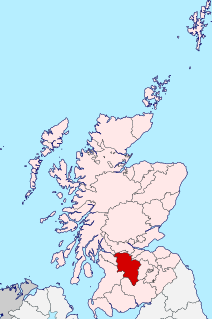Community Health Partnerships, known as CHPs (pronounced Chips) were subdivisions of Health Boards in Scotland, from 2005 to 2015, after which their functions were fully taken over by Health and Social Care Partnerships in April 2015.

Scotland is a country that is part of the United Kingdom. Sharing a border with England to the southeast, Scotland is otherwise surrounded by the Atlantic Ocean to the north and west, the North Sea to the northeast, the Irish Sea to the south, and the North Channel to the southwest. In addition to the mainland, situated on the northern third of the island of Great Britain, Scotland has over 790 islands, including the Northern Isles and the Hebrides.
Health and Social Care Partnerships, (HSCPs) are the organisations formed as part of the integration of services provided by Health Boards and Councils in Scotland. Each partnership is jointly run by the NHS and local authority.
Contents
CHPs had four roles within their locality:
- To deliver primary care services, including community mental health and sexual health services
- To work with social services to provide social care
- To promote health improvement
- To influence strategic planning, including the primary-secondary care interface

Primary care is the day-to-day healthcare given by a health care provider. Typically this provider acts as the first contact and principal point of continuing care for patients within a healthcare system, and coordinates other specialist care that the patient may need. Patients commonly receive primary care from professionals such as a primary care physician, a nurse practitioner, or a physician assistant. In some localities, such a professional may be a registered nurse, a pharmacist, a clinical officer, or a Ayurvedic or other traditional medicine professional. Depending on the nature of the health condition, patients may then be referred for secondary or tertiary care.

Mental health is the level of psychological well-being or an absence of mental illness. It is the state of someone who is "functioning at a satisfactory level of emotional and behavioural adjustment". From the perspectives of positive psychology or of holism, mental health may include an individual's ability to enjoy life, and to create a balance between life activities and efforts to achieve psychological resilience. According to the World Health Organization (WHO), mental health includes "subjective well-being, perceived self-efficacy, autonomy, competence, inter-generational dependence, and self-actualization of one's intellectual and emotional potential, among others." The WHO further states that the well-being of an individual is encompassed in the realization of their abilities, coping with normal stresses of life, productive work and contribution to their community. Cultural differences, subjective assessments, and competing professional theories all affect how one defines "mental health".

Social work is an academic discipline and profession that concerns itself with individuals, families, groups and communities in an effort to enhance social functioning and overall well-being. Social functioning is the way in which people perform their social roles, and the structural institutions that are provided to sustain them. Social work applies social sciences, such as sociology, psychology, political science, public health, community development, law, and economics, to engage with client systems, conduct assessments, and develop interventions to solve social and personal problems; and to bring about social change. Social work practice is often divided into micro-work, which involves working directly with individuals or small groups; and macro-work, which involves working with communities, and - within social policy - fostering change on a larger scale.









